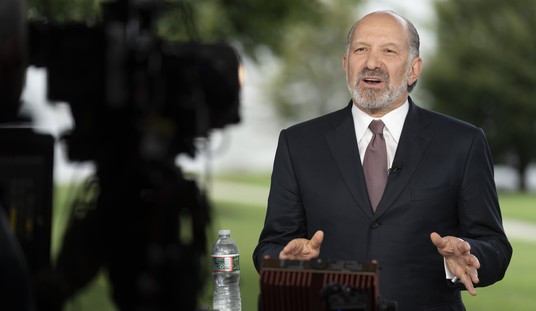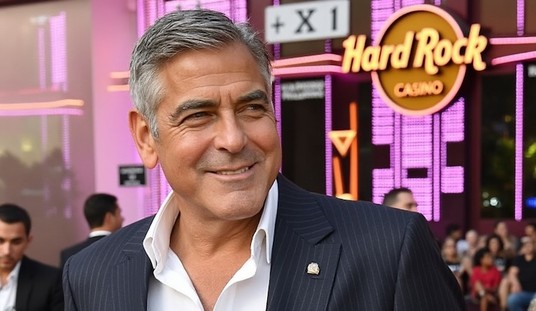The battle over a proposed high-speed rail line that would connect a scant 70 miles between Wisconsin’s two largest cities and be funded by $810 million in federal stimulus money has become symbolic of the political cage match for one of Wisconsin’s Senate seats this November. An issue usually reserved for political catfights on the state level has spilled over into one of the most highly watched Senate races on the national scene. In a strange twist of political symbiosis, the fevered debate over high-speed rail in Wisconsin could well determine the outcome of Wisconsin’s Senate battle, which could in turn determine the fate of high-speed rail in our country.
In one corner is the challenger, Ron Johnson, a successful plastics executive and political newcomer who has raised about $1.8 million and injected $4.4 million of his own money into the campaign. Johnson, a fiscal conservative, believes the rail line is an example of needless and excessive Washington spending. “Wisconsin taxpayers will be on the hook for about $10 million per year for a costly train that few will ride,” he says, calling instead for investing in existing infrastructure.
In the other corner is career politician and Washington insider, Russ Feingold, who sadly, although seeking his fourth term is still considered the “junior” senator in Wisconsin. Feingold has been in political office since 1982 and is in favor of what would become a $1 billion high-speed rail line carrying passengers between Milwaukee and Madison at 110 mph. “This is in fact building a legitimate, environmentally sound infrastructure for the future of our state,” Feingold told a group of business leaders in Madison recently. He trumpets that the federal government has agreed to pay for it and joins the chorus of local Democrat cheerleaders who point out that if Wisconsin refuses the money, it will simply go to another high-speed rail project in another state — a misguided “it’s not our money” mindset which an increasing number of American voters rightly think is in large part responsible for the deep federal deficit and our Godzilla of a national debt.
Whether the high-speed rail proposal is needed or will work in Wisconsin seems to be overshadowed by the fact that most of the money to pay for it will come from Washington. The rail proposal, part of $8 billion in economic stimulus grants awarded earlier this year to 13 rail corridors, is among the unfunded initiatives pushed by President Obama and strongly defended by Feingold. In January, Wisconsin’s “senior” senator, Herb Kohl, called on Secretary of Transportation Ray LaHood to push for federal high-speed rail funding for Wisconsin. Despite massive opposition to the project, Wisconsin’s outgoing governor appears hell-bent on pushing it through and LaHood, in a July appearance in Wisconsin, declared, “There’s no stopping it.” That is — unless Republicans garner enough power next year to derail it. The Wisconsin race between Feingold and Johnson may be, in part, a referendum on the future of high-speed rail in America.
The two combatants are now statistically tied according to a recent Rasmussen poll and the nonpartisan Cook Political Report in Washington moved its ranking of the Wisconsin race from leaning Democratic to toss-up. With many Democrats and most independents running from President Obama and his policies, Johnson may be the odds-on favorite to win. That pro-rail champion Feingold is struggling against an anti-rail newcomer like Johnson will not be overlooked by other pro-rail Democrats across the country and could well affect their barometers on the issue. Democrats have prevailed in Wisconsin in the past six presidential elections, including Obama’s 14-point victory in 2008. Since 1992, Wisconsin has elected only Democratic U.S. senators, although often by slim margins. That may soon change.
Wisconsin’s next governor, on the other hand, is likely to be a Republican, and his coattails may be long. The Republican gubernatorial candidate favored in November is Scott Walker. Walker is adamantly opposed to the high-speed rail line and says if he’s elected, he doesn’t want Wisconsin to be stuck with the bill and no train lines will be built anywhere in the state. Period. “I will put a stop to this boondoggle the day I take office,” he says. His Republican challenger, Mark Neumann, is promising to take the $810 million in federal stimulus money earmarked to build a high-speed rail line between Madison and Milwaukee and somehow use it for tax cuts.
Outgoing lame duck Wisconsin Governor Jim Doyle has touted the fact that Wisconsin “won” an $823 million federal stimulus grant to pay for building the line, as though Wisconsin had won its own lottery. He is pushing hard to cross the “point of no return” on the project, but Walker and Neumann have countered that the money should be rejected and that the project will require additional federal spending — which of course, comes from U.S. taxpayers. Walker has even run a television spot railing against “runaway government spending,” saying the state will have to spend $10 million a year on operating costs for the rail line. He vowed to “stop this train.” Democrats claim that much of the operating money will come from Washington — which, of course, is precisely the point being made by Ron Johnson. It is money Washington doesn’t have.
How and when high-speed rail became a lightning rod for political debate is unclear. However, the April 16, 2009, unveiling by President Obama of his plans for the nation’s high-speed rail (HSR) network certainly served as a catalyst. Obama boldly compared the HSR network to the creation of the Interstate Highway system in 1956, promising “at least” $1 billion per year in subsequent budget allocations in addition to $8 billion in stimulus money. His proposal seemingly fulfills his promise to redistribute wealth, as less than 1% of Americans will ride HSR but 99% will pay for it.
While Democrats in favor of high-speed rail admit that HSR will need to be heavily subsidized by the federal government, they point out that the FAA and the airline industry receives subsidies and our highway system is subsidized with every gallon of gasoline we buy. “We’re gonna be taking cars off of congested highways and reducing carbon emissions,” says Vice President Joe Biden, a fanatical rail supporter.
Fiscal conservatives like Ron Johnson respond by pointing out that most traffic jams are urban, not inter-city, so high-speed rail between cities like Milwaukee and Madison will have no effect on the daily commute of most Americans. More importantly, they claim that the stated cost of anything government does is almost always increased by a factor of ten. CNN has estimated that HSR could cost well over $500 billion and take a generation or more to build, all while failing to serve much of the country at all. In fact, globally, only two high-speed rail lines have recouped their capital costs and all depend on huge subsidies to stay in operation.
President Obama and embattled Senator Russ Feingold look to Amtrak as evidence in support of HSR, but since its founding in 1971, Amtrak has gobbled up almost $30 billion in subsidies and a typical Amtrak trip is propped up by a $35 subsidy. Nearly 150 million Americans commute to work every day, while Amtrak carries just 78,000 passengers. Many voters realize that high-speed rail will not improve those numbers, but its costs will grow exponentially.
With the U.S. economy in shambles and our national debt strangling the country, it doesn’t bode well for Feingold that he supported the wildly unpopular health-care bill, which Johnson wants repealed, as well as last year’s big clunker, the stimulus bill. Feingold’s support for the unfunded and bottomless money pit of HSR doesn’t appear to be working for him either. If an entrenched insider like Feingold loses, it could have serious ramifications for the future of high-speed rail across the country.









Join the conversation as a VIP Member